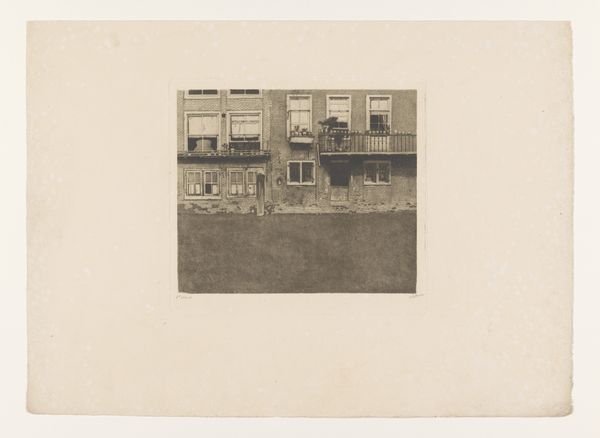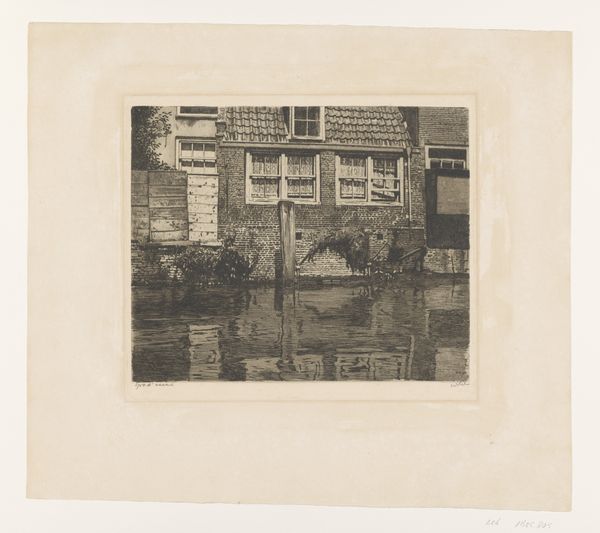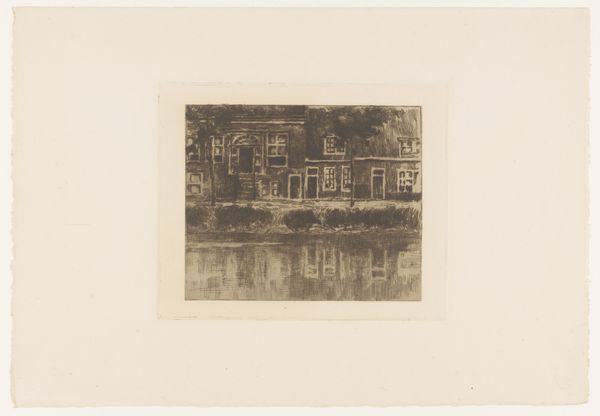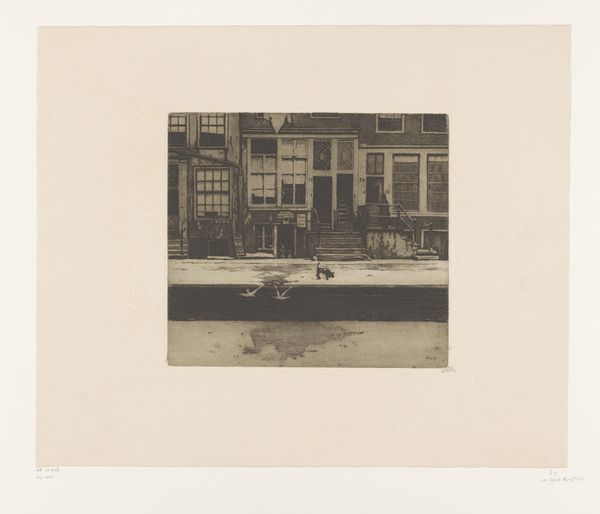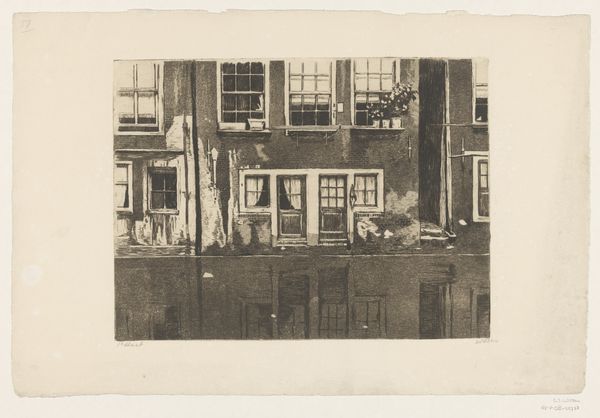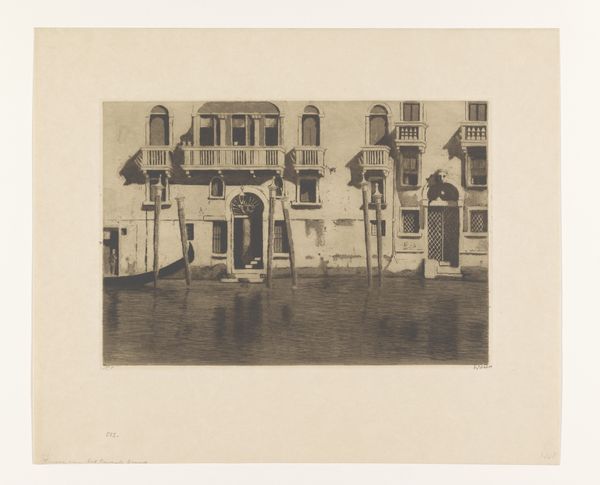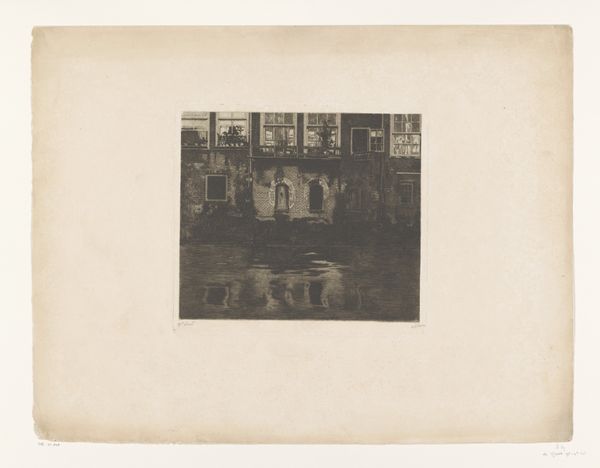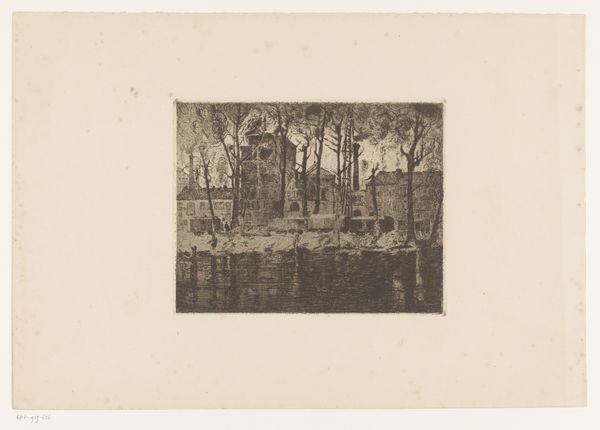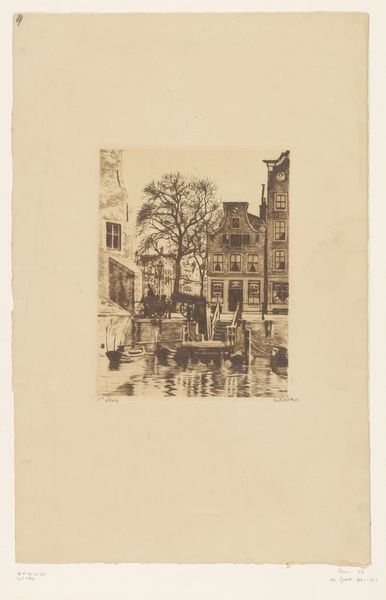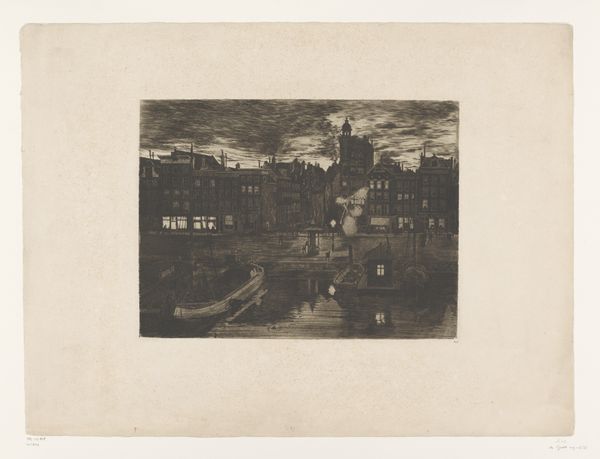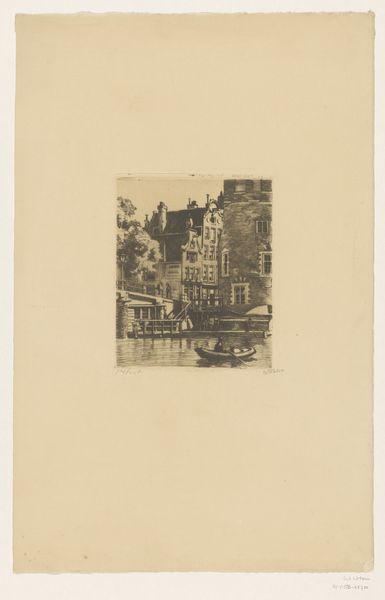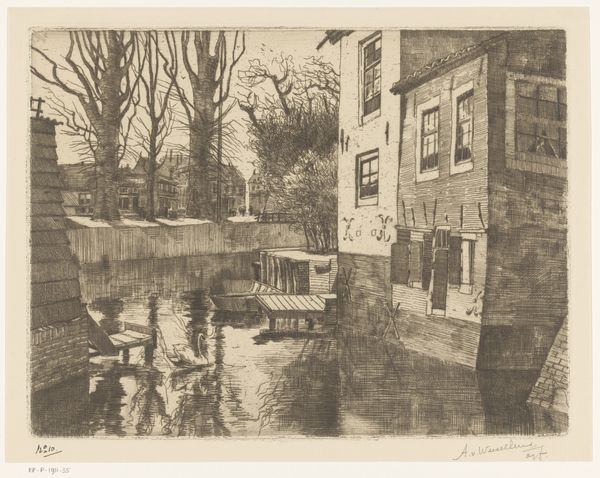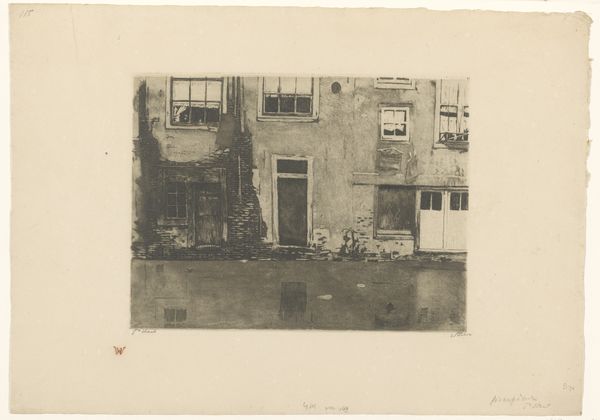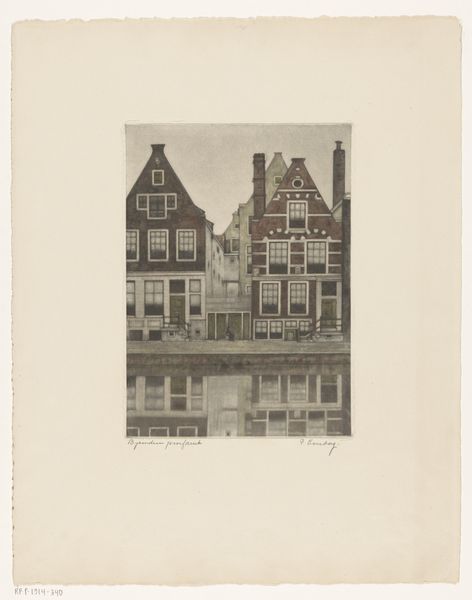
Gezicht op de achtergevels van panden aan een gracht in Dordrecht c. 1898 - 1900
0:00
0:00
willemwitsen
Rijksmuseum
print, etching
#
dutch-golden-age
# print
#
etching
#
cityscape
#
realism
Dimensions: height 280 mm, width 305 mm
Copyright: Rijks Museum: Open Domain
Curator: Here we have Willem Witsen's "Gezicht op de achtergevels van panden aan een gracht in Dordrecht," an etching from around 1898 to 1900. Editor: It's fascinating how Witsen focuses on the back of these buildings, rather than a grand facade. What strikes you about it? Curator: For me, the etching immediately highlights the means of its production. Look closely: the fine lines created through the etching process emphasize the materiality of the copper plate itself and the labour involved in its making. What can that repetitive mark-making tell us? Editor: I guess that repeated labor reminds me of the daily lives lived within those buildings. All those etched lines mimicking the repetition of daily routine. The choice of subject, a mundane view, also hints at the everyday. Curator: Exactly! Witsen isn't trying to create a heroic image. He's documenting the architecture of everyday life, made visible through his chosen materials and processes. Consider too that prints were more widely circulated than paintings. How might this accessibility affect our understanding? Editor: That makes me think about the social context and how this print could reach a wider audience, allowing more people access to art and a glimpse into the lives of others. Maybe it was almost like early photography, providing glimpses into other people’s worlds? Curator: Precisely. And what does that accessibility do to traditional ideas of 'high art' versus 'craft' when this etching is being reproduced and disseminated? It starts to break down those boundaries. Editor: I never considered the art-making process itself in this way before. Now I realize the materials and labor are communicating ideas beyond the surface imagery. Curator: Seeing art this way, as the result of production, labor, and consumption, helps reveal a lot about both the artist's choices, and society in the 19th century. Editor: I will certainly think about that with other art, too. Thank you!
Comments
No comments
Be the first to comment and join the conversation on the ultimate creative platform.
